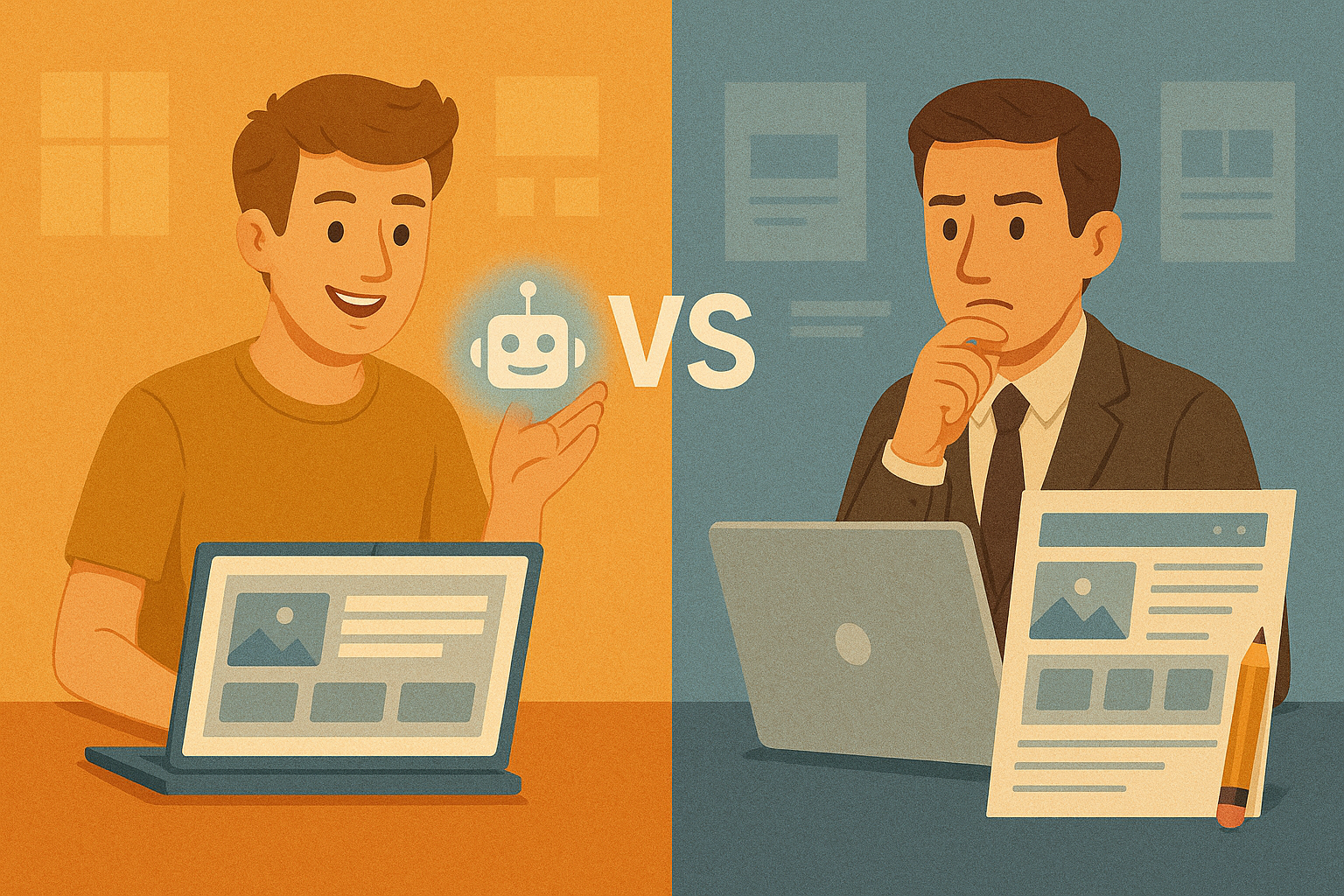Web design in 2025 is changing fast. With the rise of AI page builders, even non-coders can create stunning, responsive websites in minutes. But does this mean traditional web design is obsolete? Let’s break down the differences so you can choose what’s best for your business.
What Are AI Page Builders?
AI page builders use artificial intelligence to automate site creation. You describe your needs, and the tool suggests layouts, generates content, and optimizes for mobile—all in seconds.
- Speed: Launch a website in a fraction of the time
- Cost: No need for a large budget or a design team
- Ease: No coding or design experience required
- AI enhancements: Automatic SEO, content suggestions, and design tweaks
Traditional Web Design
Traditional web design means working with designers and developers to build a custom site from scratch. This approach allows for total creative freedom, complex features, and unique branding—but it takes more time, skill, and budget.
- Customization: Full control over every detail
- Scalability: Custom features and integrations are easier to add
- Personal Touch: Stand out with unique design and UX
AI vs. Traditional: Which to Choose?
| AI Page Builder | Traditional Web Design |
|---|---|
| Fast setup | Longer timeline |
| Lower cost | Higher investment |
| Good for small/medium business, landing pages | Best for enterprise, complex projects |
| Less unique, but improving | Fully custom, brand-driven |
Conclusion
If you need a simple, fast, and affordable website, AI page builders are a game-changer in 2025. For large projects, complex needs, or brands needing a custom touch, traditional web design is still king. The future? Most businesses will use a mix—AI for speed, humans for creativity.
